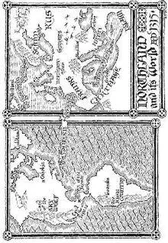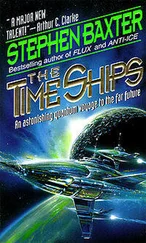By its charter, RDA is not allowed to deploy any weapons of mass destruction on Pandora, or indeed to use excessive military force. We see ethical dilemmas on these lines played out in the course of the movie, as Jake, Grace and others oppose Quaritch and Selfridge. But fine ethical distinctions might not have been clear to the Na’vi on the receiving end of the RDA’s improvised daisycutter. Still, an organisation with space travel capabilities could easily do a lot more damage if it tried; a small asteroid prodded towards an impact on the Tree of Souls would unleash energies equivalent to a nuclear weapon.
You might ask if the makers of Avatar have been conservative in their depiction of war-making, with vehicles and weapons with such close parallels to modern gear. The assault on Pandora is some hundred and forty years into the future. A hundred and forty years ago, it was the era of the Civil War in the U.S. and the Franco-Prussian War in Europe; war fighting tactics and technologies have evolved hugely since then. In 2154, would armed forces still be using craft and weapons so similar to those in use now?
Well, specific military technology designs can endure a long time if they work well enough (as indeed they can in the civilian world). The Hercules, or variants of it, has been flying for over fifty years already, and the B-52 bomber, first flown in 1952, has a projected out-of-service date of 2050, by which time it will be a century old! And in Avatar the Samson, for example, is a century-old design.
Then there’s the challenge of the environment. The aircraft shown in the film were primarily designed to operate in Earth’s atmosphere, and have now been adapted for Pandora, with its toxic gases and volcanic products in the air (see Chapter 17), and powerful magnetic fields. You would need to retune turbine and rotor systems, remodel intake ducts, recalculate fuel mixes, harden systems against electromagnetic fields. To face the challenge of such a difficult environment you would want to be able to rely on a robust, proven, veteran workhorse. The Samson is just such a workhorse, tested over decades in a variety of environments on Earth, from the Antarctic to the Honduras—including operations where hardening against electromagnetic fields was necessary, which is why on Pandora it responds relatively well over a “fluxcon,” an area of strong magnetic flux.
And recall that all the aircraft we see onscreen, save for their more complex components like missile tracking and guidance electronics, have had to be manufactured in the stereolithography plants on Pandora. It has been necessary to choose designs, however elderly, that did not need the most modern exotic materials technology, such as (in 2154) exotic ceramics and nanomaterials, beyond the reach of the matter printers. Again, the Samson is one such veteran design. A lack of ground support on Pandora for more advanced systems is another factor.
But this is an instance where we also have to allow for some creative licence. Avatar is about a clash of cultures, the heavy-handed technological human civilisation versus the graceful Na’vi, living lightly in their world. The heavier the human tech, and the grungier it looks, the more striking that contrast is going to be, in every shot when we see the two sides in opposition. And the echoes of Vietnam are deliberate, including references to Apocalypse Now (1979), with its famous scenes of helicopter gunships flapping over the jungle.
The depiction of much of the military hardware in the movie, and the way it is used, is thus thoroughly realistic, at least in terms of today’s technology. One item you won’t see walking around modern battlefields, however, is an AMP suit.
Standing four metres tall on two legs and with its two grasping hands, the Mk-6 Amplified Mobility Platform has a sealed cabin within which its operator (wearer?) rides. The suit’s motions are slaved to the operator’s through servo armatures moved by the operator’s arms, as we see when Quaritch “boxes” inside a suit, with the machine’s huge arms aping the colonel’s jabs. Foot-pedals actuate the legs. The suits come heavily armoured, with weapons ranging from automatic cannon to an ugly-looking slasher knife. The suits have a good deal of built-in smartness, such as an autonomous ability to keep their balance, and even a “walk-back” facility if the operator is disabled. But the amplification of strength and range of motion between the operator’s movements and the suit’s response takes a lot of training to master.
The AMP suit is an outcome of modern-day experiments in developing powered “exoskeletons” for military purposes. An exoskeleton would be like a wearable robot, a mobile machine like a suit of armour with limb movement at least partially supported by the power supply. The aims would be to provide greater strength and speed, as well as armour protection and sensory enhancements, with none of the loss of the fine control the wearer would have over her own body movements. Other applications, perhaps of partial exoskeletons rather than complete ones, might include prosthetics and medical care—an aid to nurses in lifting heavy patients delicately, for example.
The first experimental exoskeleton was co-developed by General Electric and the U.S. military in the 1960s. This programme was said to have been inspired by the powered armour featured in the 1959 Robert Heinlein science-fiction novel Starship Troopers , a classic case of the interaction of science fiction and science. Later fictional examples include Marvel’s Iron Man, and of course the “power loader” machines of James Cameron’s own Aliens (1986).
That first GE suit was too heavy, its motions too violent and uncontrolled. A light and capacious power unit has always been a nagging design issue. But developments continue on various fronts. Lockheed Martin’s appropriately named HULC (Human Universal Load Carrier) is a pair of battery-powered hydraulic legs that reinforce a soldier’s limbs, and give her the ability to carry heavy weights at around fifteen kilometres per hour. Exoskeletons are also being studied as part of the U.S. military’s “Future Force Warrior” advanced technology demonstration project—a lightweight, wearable infantry combat system designed to address the needs of the “Army After Next” in the future. There’s even a civilian-grade exoskeleton, the HAL-5 (Hybrid Assisted Limb), a full-body machine made by the company Cyberdyne; this is already on sale in Japan, and is in use as a support by elderly and infirm people.
You might alternatively regard the AMP suit not as an exoskeleton but rather as an example of a “mecha,” a name given to ambulatory manned fighting robots in some genre fiction. The distinction between mecha and exoskeletons is vague, but roughly speaking a mecha is piloted, while an exoskeleton is worn. The tripodal fighting machines of H. G. Wells’ War of the Worlds are early examples of mecha, as are the “Walkers” of the Star Wars films. Unlike exoskeletons, little military investment seems to have been made in mecha—but a subsidiary of John Deere did produce an experimental six-legged walking harvester! I’ve yet to spot any of those in my local forests.
In the Avatar timeline AMP suits were derived from earlier exoskeleton designs deployed in various war theatres on Earth, and developed for off-world use on the moon and Mars. The suits are formidable weapons in the right circumstances, as we see in the movie during the climactic fight at the remote link shack, when Quaritch in his suit is able to defeat a thanator—and then is able to use his suit’s precision of movement to reach inside the shack to interfere with the equipment there. The suit’s bipedal locomotion could be useful in situations such as Pandora’s dense forests, where the mobility of wheeled vehicles would be impaired. But an AMP suit would always be vulnerable to simple trip-wires, and bolas: thrown weighted ropes, like the one the Na’vi warriors use to bring down Jake. The mighty Star Wars Walkers were similarly vulnerable to bolas.
Читать дальше










